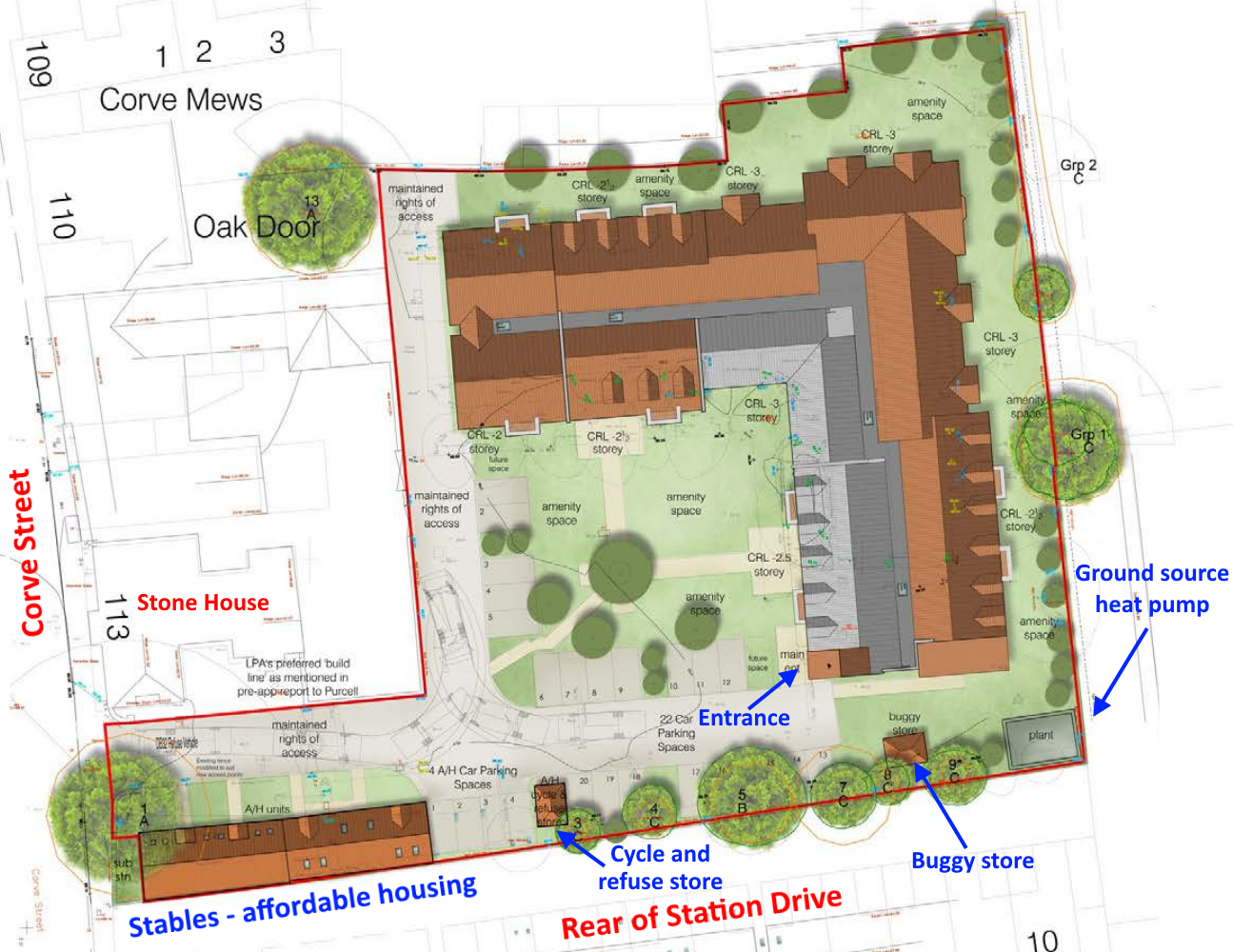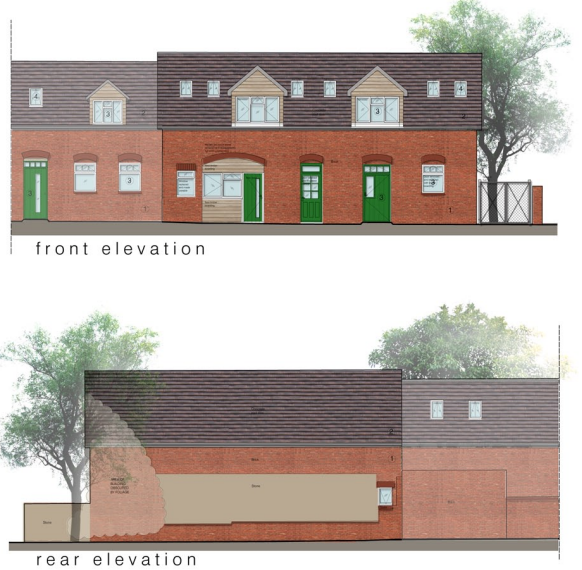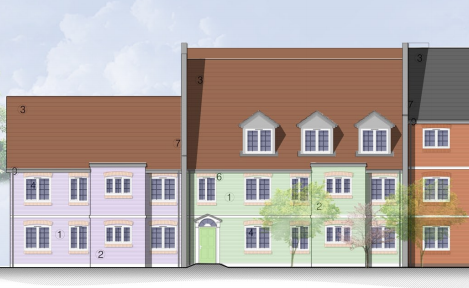Update 25 June 2016
This application will be considered by the South Planning Committee on 19 July.
Main article 19 May 2016
It’s taking some time to get this application right. This often happens in significant planning applications and my view is that it is always worth taking the time to get an application right. Housing built today will still be around in a hundred years’ time and we need to get it right.
The first application for this site didn’t find favour with planners and conservations. It was revised but still failed to convince the town council, neighbours and myself. Now we have a third scheme. The application is for 44 retirement apartments and conversion of the stable block into four one bed affordable flats (16/02033/FUL).
 The former council offices will be demolished[1] and replaced by the retirement apartments. The stables will be retained and partially rebuilt to house the affordable flats.
The former council offices will be demolished[1] and replaced by the retirement apartments. The stables will be retained and partially rebuilt to house the affordable flats.
 Main block looking north
Main block looking north
 Main block looking east
Main block looking east
 Stables affordable housing
Stables affordable housing
The development will have 20 car parking spaces and 1,493 sq metres of open space. This is 75% of the open space area normally expected under Shropshire Council’s Open Space Interim Planning Guidance.
Sheltered Housing
The scheme is being put forward by Purcell Developments and Churchill Retirement Living:
“The accommodation is specifically designed to meet the needs of independent retired people, and provides self-contained apartments for sale contained within a single block. The apartments are sold with a lease containing an age restriction which ensures that only people of 60 years or over, or those over this age with a partner of at least 55, can live in the development.”
Churchill points out that recent research suggests that the average age of occupiers in sheltered accommodation is 79, the majority of which are single female households. It says:
“Sheltered housing produces a large number of significant benefits which can help to reduce the demands exerted on health and social services and other care facilities – not only in terms of the fact that many of the residents remain in better health, both physically and mentally, but also doctors, physiotherapists, community nurses, hairdressers and other essential practitioners can all attend to visit several occupiers at once. This leads to a far more efficient and effective use of public resources.”
The company says that as older people move into retirement complexes, under occupied housing will be released into the market. Retirement homes also help to maximise use of urban brownfield land, reducing pressure for development on greenfield sites. Such developments “discourage the use of private vehicles by being located within highly sustainable locations in relation to town centres and public transport routes.” They will, say Churchill, “introduce a neighbourly use of the sites, which as a result can add to the vitality and vibrancy of town centres.”
The retirement apartments will be overseen by a lodge manager. Residents will also have a link to a 24 hours, seven day a week call centre. The communal garden will be maintained by a management company.
Comment
I’m not going to give a final view on this development until I have talked to nearby residents, the conservation team and the town council. But on first sight, I think this is an acceptable design for a site in need of development. It has a much lower impact on the residents of Station Drive than the previous plans.
The car parking seems about right given the location of the development and that it is targeted at older people. However, I see no reference to disabled car parking spaces or short-term parking for carers. The need to provide for carers might require additional or designated parking spaces.
I think the open space is sufficient for a town centre retirement scheme. It is certainly more space than most retirement settlements in Ludlow have.
The heritage statement makes no mention of the 1980s nuclear bunker under Lachlan House. This is an unlisted heritage asset and something of a curiosity. It should be fully recorded before the building is demolished.
Several people have contacted me saying they believe our town does not need more retirement housing. What it needs is housing for younger people.
I agree that we are getting desperate for housing for young people and their families. Ludlow is rapidly getting older – faster than the rest of Shropshire and England as a whole. Ludlow North, the area I represent, has more elderly people than the large majority of wards in England.[2] Our older population contributes so much to our town, particularly through volunteering. But it would be wrong to ignore the reality that we getting short of places for young people to live.
The lack housing for younger people doesn’t mean we should ignore our older population.
In any event, planning rules dictate that we must treat every application on its own merits and judge the proposal against national and local planning policies. There are no local or national planning policies that allow us to restrict the growth of retirement housing or, for that matter, promote the building of housing for young people and families. On the latter, I wish there were.
Stone House is an ideal site for retirement housing. It is located near to transport, shops and medical facilities. In planning terms, it is sustainable. That’s why I am inclined to support this development.
I don’t think we should resist this application just because it is retirement housing. But it does sharpen our focus – and I hope our determination – to get affordable housing built for younger people and families.
Notes
[1]. The council offices were always known locally as Stone House, which is historically the name of the Grade II* listed building on Corve Street. The formal name for the council offices was Lachlan House.
[2]. Only 118 of the 7,655 English electoral wards have a higher percentage of residents aged 65 years or older than Ludlow North. Put another way, 98.5% of wards have a younger population than Ludlow North. I’ll write more on our rapidly ageing demographic in Ludlow next month.

